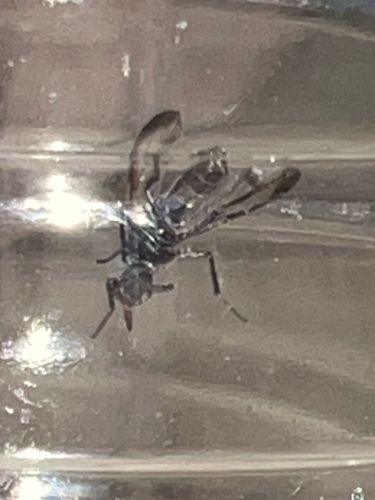Ant alate (winged ant)
Scientific Name: Formicidae (alate)
Order & Family: Hymenoptera, Formicidae
Size: 3-20 mm, depending on the species.

Natural Habitat
Found globally in most terrestrial habitats, especially during reproductive flights from established colonies.
Diet & Feeding
Diet varies greatly by species. Reproductive alates typically do not feed extensively during their flights, but their colonies feed on a wide range of substances including nectar, honeydew, seeds, fungi, other insects (both live and dead), and human food scraps.
Behavior Patterns
Alates are the reproductive forms of ants (queens and males). They emerge from established colonies, usually seasonally, for nuptial flights to mate. After mating, males die, and successful queens shed their wings to start new colonies. They are attracted to lights during these flights.
Risks & Benefits
Generally harmless to humans, though some species can bite or sting if provoked. They are beneficial for soil aeration, seed dispersal, and pest control (predation on other insects). Large numbers indoors during nuptial flights can be a nuisance, and some species can cause structural damage to wood (e.g., carpenter ants).
Identified on: 9/26/2025